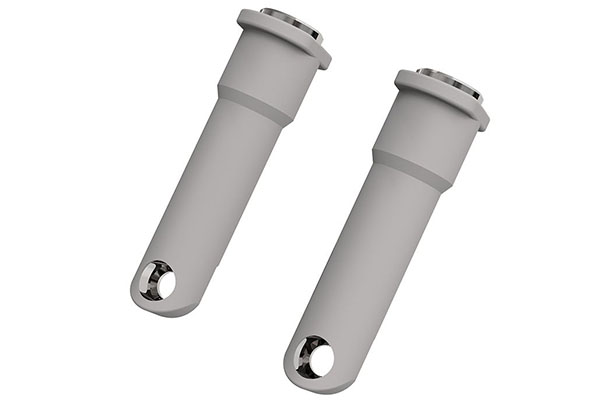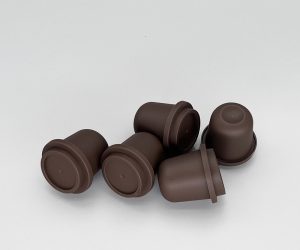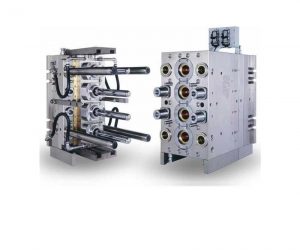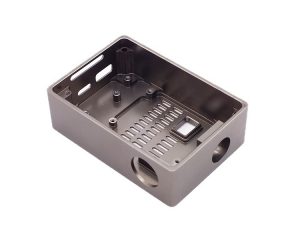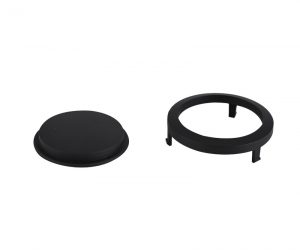1. Introduction: The Precision Paradigm of Wire EDM
In the highly competitive and technologically advanced landscape of modern manufacturing, precision is no longer a luxury but an absolute necessity. This is particularly true for industries such as aerospace, where components must withstand extreme conditions; medical devices, where the slightest deviation can have life - altering consequences; and mold making, which demands intricate and accurate designs.
Wire Electrical Discharge Machining (Wire EDM) has emerged as a game - changing technology in this precision - driven manufacturing environment. This innovative process harnesses the power of electrical discharge to achieve an extraordinary level of accuracy, often reaching the micron level. What sets Wire EDM apart is its ability to work on the hardest conductive materials, materials that would pose insurmountable challenges for traditional machining methods.
For Yigu Technology example, in the aerospace industry, components like turbine blades are made from superalloys that are extremely heat - resistant and strong. These materials are notoriously difficult to machine using conventional techniques. However, Wire EDM can precisely cut and shape these superalloys, ensuring that the final product meets the strictest tolerances required for high - performance aircraft engines.
In the medical device field, components for surgical instruments or implantable devices need to be not only highly precise but also biocompatible. Wire EDM can produce complex geometries in materials such as titanium, which is widely used in medical implants due to its biocompatibility and strength.
This article aims to comprehensively analyze how Wire EDM services are redefining precision cutting. Yigu Technology will delve into the technical aspects that make Wire EDM so accurate, explore its diverse applications across different industries, and compare its competitive advantages with other machining methods. By incorporating real - world data, in - depth comparative analysis, and insights from industry experts, we hope to clearly demonstrate why Wire EDM has become a fundamental technology for addressing the most demanding manufacturing challenges.
2. The Science Behind Wire EDM: How It Works
2.1. Core Mechanisms of Electrical Discharge Machining
Wire EDM is based on a fascinating scientific principle that sets it apart from traditional machining techniques. At its core, Wire EDM operates on the principle of thermal erosion. A thin, electrically charged electrode wire, typically made of copper or brass with a diameter ranging from 0.02 - 0.3mm, is used to create pulsed electrical discharges with the workpiece.
The process begins when a high - frequency electrical pulse is generated by the pulse power supply. This power supply is a crucial component, as it generates electrical pulses in the range of 1 - 500 kHz. These pulses control the discharge energy, which is essential for precise material removal. The amount of material removed can be precisely regulated, typically in the range of 0.1 - 10 mm³/min. This level of control allows manufacturers to create intricate and accurate components.
As the electrical pulses are discharged between the wire and the workpiece, an extremely high - temperature plasma channel is formed at the contact point. Temperatures within this channel can reach up to 10,000 °C. This intense heat vaporizes the material at the surface of the workpiece, creating a small crater. The process is highly controlled, with each discharge removing a minute amount of material, resulting in a very precise and smooth cut.
The wire, which acts as the electrode, moves continuously during the machining process. In slow - wire EDM, the wire moves at low speeds, typically between 0.1 - 15 m/min. This slow movement allows for extremely accurate machining, as the wire can be precisely guided. The wire is guided by diamond - coated rollers, which ensure that it maintains a straight path within an accuracy of 0.001mm. This high - level of straightness is crucial for achieving tight tolerances in the final product.
In fast - wire EDM, the wire moves at much higher speeds, typically 5 - 10 m/s. Despite the high speed, the process can still achieve high precision, making it suitable for applications where speed is a critical factor without sacrificing too much on accuracy.
Another key component in the Wire EDM process is the dielectric fluid. This fluid serves multiple important functions. Deionized water or hydrocarbon oil is commonly used as the dielectric fluid. It flushes away the debris created during the machining process, ensuring that the work area remains clean and the process can continue smoothly. The fluid also cools the workpiece, preventing it from overheating, which could cause distortion or damage to the material. Additionally, the dielectric fluid insulates the gap between the wire and the workpiece, which is typically 5 - 50μm. This insulation is essential for ensuring stable electrical discharges and consistent machining results.
2.2. Precision Engineering in Motion
One of the most remarkable aspects of Wire EDM is its ability to achieve an incredibly high level of dimensional accuracy. For slow - wire EDM, it can achieve a dimensional accuracy of ±0.001mm or even better in some advanced systems. Fast - wire EDM, while generally not as precise as slow - wire EDM, can still achieve an accuracy of ±0.01mm, which is far better than what can be achieved by many traditional cutting methods.
To put this into perspective, consider the machining of a 10mm - thick tungsten carbide component with a 0.2mm - wide slot. When using Wire EDM, it is possible to ensure that the slot width variation is <0.005mm. This level of precision is nearly impossible to achieve with traditional milling or laser cutting methods. Milling, for Yigu Technology example, may have a tolerance of ±0.1mm, which is significantly higher than what Wire EDM can achieve. Laser cutting may also struggle to achieve such tight tolerances, especially when working with hard materials like tungsten carbide, as the heat - affected zone can cause dimensional inaccuracies.
The high precision of Wire EDM is also evident in its ability to create complex shapes with sharp corners and fine details. The pulsed electrical discharge allows for the removal of material in a very controlled manner, enabling the creation of features that would be difficult or impossible to achieve with other machining techniques. For instance, in the production of micro - components for the electronics industry, Wire EDM can create holes with diameters as small as 0.05mm with high precision, ensuring that the components meet the strict requirements of the industry.
3. Unmatched Advantages of Wire EDM Services
3.1. Precision Beyond Conventional Limits
Wire EDM services stand out in the manufacturing world due to their unparalleled precision. When compared to other popular cutting methods such as laser cutting and plasma cutting, the superiority of Wire EDM becomes evident. Consider the following Yigu Technology table that details key parameters:
| Parameter | Wire EDM (Slow-Wire) | Laser Cutting | Plasma Cutting |
| Dimensional Accuracy | ±0.001mm | ±0.2mm | ±1mm |
| Surface Roughness (Ra) | 0.1–0.8μm | 1.6–3.2μm | 12.5μm+ |
| Minimum Feature Size | 50μm | 100μm | 500μm |
| Material Hardness Limit | No restriction | <50 HRC | <40 HRC |
In a mold - making application, a mold cavity might require a dimensional accuracy of ±0.01mm for proper functioning. Wire EDM can easily meet and even exceed this requirement, while laser cutting with its ±0.2mm accuracy might lead to parts that do not fit together perfectly, and plasma cutting, with an accuracy of ±1mm, would be completely unsuitable for such a precise mold.
The surface roughness achieved by Wire EDM is also far superior. A part with a smooth surface finish is crucial for applications where friction needs to be minimized, such as in high - speed rotating components in machinery. A surface roughness of 0.1 - 0.8μm in Wire EDM ensures that the parts have less wear and tear during operation compared to parts cut by laser or plasma cutting, which have much rougher surfaces.
The minimum feature size that Wire EDM can achieve is another area where it outshines its competitors. In the production of micro - components for the electronics industry, features as small as 50μm are required. Laser cutting, with a minimum feature size of 100μm, and plasma cutting, with 500μm, simply cannot meet the demands of such high - precision micro - manufacturing.
3.2. Material Agnosticism: Cutting the Uncuttable
One of the most remarkable aspects of Wire EDM is its ability to work with a wide range of conductive materials, regardless of their hardness or brittleness. This makes it an ideal choice for industries that deal with exotic and difficult - to - machine materials.
- Aerospace Alloys: Materials like titanium (Ti - 6Al - 4V), Inconel 718, and tungsten carbide are extensively used in the aerospace industry, especially for jet engine components. These alloys are extremely strong and heat - resistant, which makes them difficult to machine using traditional methods. However, Wire EDM can machine these materials without introducing heat - induced stress. The thermal affected zone in Wire EDM for these materials is less than 50μm, ensuring that the mechanical properties of the components remain intact. For example, in the production of turbine blades made of Inconel 718, Wire EDM can precisely cut the complex shapes required while maintaining the integrity of the material's high - temperature - resistant properties.
- Medical Grade Metals: In the medical device industry, materials such as Nitinol (a shape - memory alloy) and cobalt - chromium are used for orthopedic implants. These materials need to be cut with extreme precision and without any burrs, as even the smallest imperfection can cause issues when implanted in the human body. Wire EDM can achieve zero - burr cutting, and it also meets the strict ISO 13485 biocompatibility standards. This ensures that the medical devices produced are safe and effective for patients.
- Exotic Conductors: Graphite electrodes used in EDM dies and copper - tungsten composites for electrical contacts are also precision - machined using Wire EDM. The process allows for 99.9% material utilization, which is highly efficient. For graphite electrodes, Wire EDM can create the intricate shapes required for EDM dies, ensuring high - quality and long - lasting dies. Copper - tungsten composites, with their unique electrical and thermal properties, can be machined to the exact specifications needed for electrical contacts, enhancing the performance of electrical systems.
3.3. Complex Geometry Mastery
Wire EDM has an extraordinary ability to create complex geometries that are often beyond the reach of traditional subtractive machining methods. This is because traditional methods are often limited by tool accessibility, while Wire EDM can navigate intricate paths with ease.
- Sharp Internal Corners: Wire EDM can achieve radii as small as 0.05mm. This is extremely important in mold - making, where mold cavities often have interlocking features with sharp internal corners. For Yigu Technology example, in the production of injection molds for small plastic parts with complex internal structures, the ability to create such sharp corners ensures that the plastic parts can be precisely formed, with no rounding or distortion at the corners.
- Thin - Wall Structures: In industries like aerospace, there is a need for thin - wall structures to reduce weight while maintaining strength. Wire EDM can cut walls as thin as 0.1mm in stainless steel without causing deformation. This is crucial for components such as aerospace heat exchangers, where thin - walled structures are used to maximize heat transfer efficiency while minimizing weight. If these thin - walled structures were to be machined using traditional methods, there is a high risk of deformation, which could compromise the functionality of the heat exchanger.
- Tapered Cuts: Wire EDM can process angles up to 30°. This capability is essential in the production of aerospace turbine blades, which have airfoil profiles with tapered cuts. These tapered cuts are designed to optimize the aerodynamic performance of the turbine blades. In the medical field, bone reamers with tapered flutes can also be precisely machined using Wire EDM. The tapered flutes on bone reamers are important for efficient bone - cutting and debris removal during surgical procedures.
4. Industry Applications: Where Precision Matters Most
4.1. Aerospace: Crafting Flight-Critical Components
In the aerospace industry, precision is not just a requirement; it is a matter of life and death. Every component in an aircraft, from the smallest fastener to the largest wing structure, must be manufactured to the highest standards of accuracy. Wire EDM plays a crucial role in this industry, enabling the production of components with the tight tolerances and complex geometries required for high - performance flight.
In jet engine manufacturing, Wire EDM machines titanium alloy compressor blades with 0.01mm chordal tolerance, ensuring aerodynamic efficiency at supersonic speeds. A case study by Boeing showed that Wire EDM reduced material waste by 40% compared to CNC milling for complex Inconel 718 structural brackets, while achieving a surface finish of Ra 0.4μm. This reduction in material waste not only saves costs but also aligns with the industry's growing focus on sustainability.
The high - temperature and high - stress environments that aerospace components must endure make the use of materials like titanium and Inconel essential. However, these materials are extremely difficult to machine using traditional methods. Wire EDM's ability to cut these materials without introducing heat - induced stress is a significant advantage. For Yigu Technology example, in the production of turbine blades, the precise shaping achieved by Wire EDM ensures that the blades can withstand the extreme rotational speeds and temperatures within a jet engine, improving the overall efficiency and reliability of the engine.
4.2. Medical Devices: Micro - Precision for Life - Saving Tools
The medical device industry is another area where Wire EDM has made a significant impact. The demand for minimally invasive surgical procedures has led to the development of smaller, more precise surgical instruments. Wire EDM is uniquely suited to produce these micro - components with the required precision.
For minimally invasive surgical instruments, Wire EDM cuts 0.3mm - diameter holes in 10mm - thick stainless steel with a depth - to - diameter ratio of 30:1, critical for laparoscopic graspers. In orthopedics, patient - specific knee implants made from cobalt - chromium are machined to match MRI scans within ±0.05mm, ensuring perfect bone integration.
The biocompatibility of the materials used in medical devices is of utmost importance. Wire EDM can machine biocompatible materials such as titanium, cobalt - chromium, and Nitinol without compromising their integrity. This ensures that the final products are safe for use in the human body. Additionally, the ability to create complex geometries allows for the design of more effective medical devices. For example, the precise shaping of orthopedic implants can improve their fit within the body, reducing the risk of complications and improving patient outcomes.
4.3. Mold Making: The Backbone of Mass Production
Mold making is the foundation of mass production in many industries, including automotive, consumer electronics, and packaging. The ability to produce high - quality molds with tight tolerances is essential for the efficient production of high - volume products.
Mold manufacturers rely on Wire EDM to create injection molds for smartphone casings, achieving 0.02mm tolerance on 0.3mm - thick ribs and intricate texturing (e.g., anti - slip patterns). A leading automotive supplier used slow - wire EDM to machine a 500mm - long aluminum die with 0.003mm flatness, reducing post - machining polishing time by 60%.
The use of Wire EDM in mold making allows for the creation of complex mold cavities and cores with sharp corners and fine details. This enables the production of products with intricate designs, such as the sleek and ergonomic designs of modern smartphones. The high precision of Wire EDM also ensures that the molds have a long service life, reducing the need for frequent replacements and increasing production efficiency. Additionally, the ability to create molds with tight tolerances means that the products produced from these molds will have consistent quality, which is crucial for maintaining customer satisfaction.
6. Choosing the Right Wire EDM Partner
Selecting the right Wire EDM partner Yigu Technology is a critical decision that can significantly impact the quality, cost - effectiveness, and timeliness of your manufacturing projects. Here are the key factors to consider when evaluating potential providers:
6.1 Technical Capability
- Machine Fleet: A top - tier Wire EDM service provider should have a diverse and advanced machine fleet. Look for those equipped with slow - wire EDM machines, such as the Sodick AQ325L. These machines are renowned for their sub - micron resolution, which can achieve dimensional accuracies down to ±0.001mm or even better in some cases. Additionally, machines with multi - axis 联动 capabilities, up to 6 axes, are essential for handling complex tapers. For example, in the aerospace industry, where components often have complex geometries with tapered features, a 6 - axis Wire EDM machine can precisely cut these parts, ensuring that they meet the strict aerodynamic requirements.
- Material Expertise: Different materials require different machining parameters. Ensure that the provider has extensive experience with your target materials. A supplier specialized in tungsten carbide, for instance, will have optimized wire tension and pulse settings for this extremely hard and brittle material. Tungsten carbide has a high melting point and is difficult to machine, but a knowledgeable provider can use the right Wire EDM parameters to achieve clean cuts with minimal wire breakage and high - quality surface finishes. They will also be able to recommend the best wire type and dielectric fluid for the specific material, further enhancing the machining process.
6.2 Flexibility and Speed
- Prototyping to Production: A good Wire EDM partner should be able to handle projects from small - scale prototyping to high - volume production. For one - off prototypes, they should offer rapid turnaround times, typically within 24 - 48 hours. This allows product designers and engineers to quickly test their concepts and make any necessary design changes. For high - volume production runs, the provider should have scalable solutions, such as automated loading and unloading systems, to ensure that they can produce a large number of parts efficiently. A provider that can produce 500+ parts per week can meet the demands of industries with high - volume production needs, such as the automotive industry.
- Customization: The ability to customize the Wire EDM process according to your specific requirements is also crucial. Whether it's adjusting the wire speed, pulse frequency, or dielectric fluid flow rate, a flexible provider can optimize the process to achieve the best results for your particular application. They should also be able to work with you to develop custom fixtures or tooling to ensure the accurate and efficient machining of your parts.
7. Conclusion: The Indispensable Edge of Wire EDM
Yigu Technology Wire EDM machining services have firmly established themselves as an indispensable force in modern precision manufacturing. Their capabilities far exceed the limitations of traditional machining methods, opening up new possibilities for industries across the board.
From the technical perspective, the unique principle of electrical discharge machining allows Wire EDM to achieve a level of precision that is simply unattainable by many other processes. The ability to precisely control the electrical discharge, along with the use of advanced wire - guiding systems and dielectric fluids, ensures that the machining process is highly accurate and repeatable. This precision is not just a nice - to - have; it is essential for industries such as aerospace, medical devices, and mold making, where even the slightest deviation can have catastrophic consequences.
The advantages of Wire EDM are also evident in its material versatility and its mastery of complex geometries. It can machine the hardest and most exotic conductive materials, enabling the production of components that were once considered impossible to manufacture. In terms of complex geometries, Wire EDM can create sharp internal corners, thin - wall structures, and tapered cuts with ease, providing designers and engineers with the freedom to create innovative and high - performance products.
Looking at the real - world applications, Wire EDM has become a cornerstone technology in key industries. In aerospace, it enables the production of flight - critical components that can withstand extreme conditions. In the medical device industry, it plays a crucial role in the production of life - saving tools with micro - precision. And in mold making, it is the backbone of mass production, ensuring the high - quality and efficient production of a wide range of products.
When it comes to choosing a Wire EDM partner Yigu Technology, technical capability, quality assurance, and flexibility are key factors. A reliable partner with advanced machines, material expertise, on - site metrology labs, and certifications can provide the level of precision and quality required for demanding projects.
FAQ
Q1: What materials are suitable for Wire EDM?
A1: Wire EDM can machine a wide range of conductive materials, including titanium, Inconel, tungsten carbide, cobalt - chromium, Nitinol, graphite, and copper - tungsten composites. There is no real limit on material hardness, making it suitable for even the most difficult - to - machine alloys.
Q2: How accurate is Wire EDM compared to other cutting methods?
A2: Slow - wire Wire EDM can achieve a dimensional accuracy of ±0.001mm, while fast - wire EDM can reach ±0.01mm. In contrast, laser cutting typically has an accuracy of ±0.2mm and plasma cutting has an accuracy of ±1mm. Wire EDM also offers superior surface finish and can create smaller features.
Q3: Can Wire EDM be used for high - volume production?
A3: Yes, Wire EDM can be used for high - volume production. Providers with automated loading and unloading systems can produce large numbers of parts efficiently. For example, some can produce 500+ parts per week, meeting the demands of industries with high - volume production needs.
